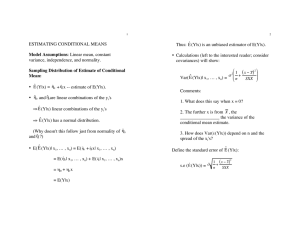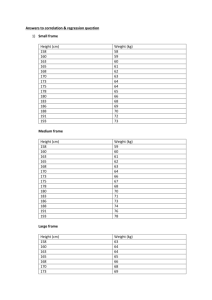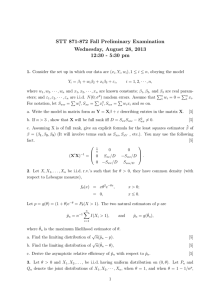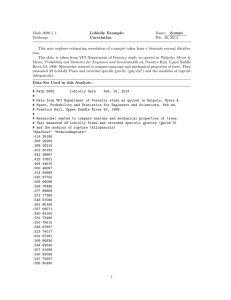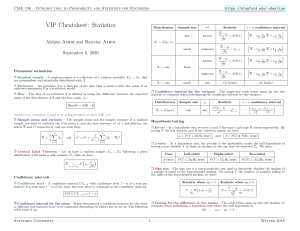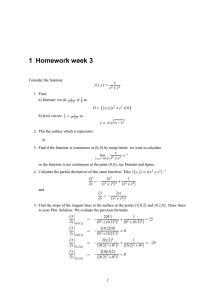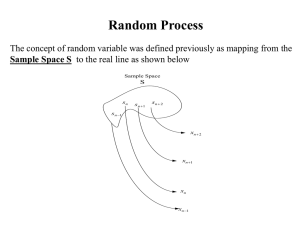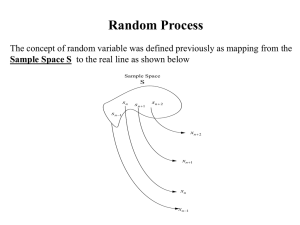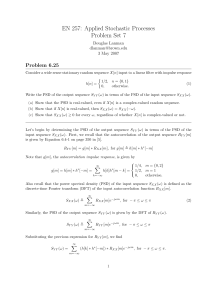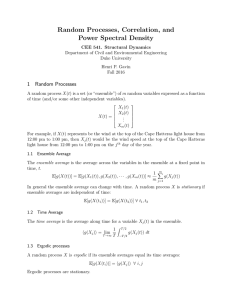advertisement
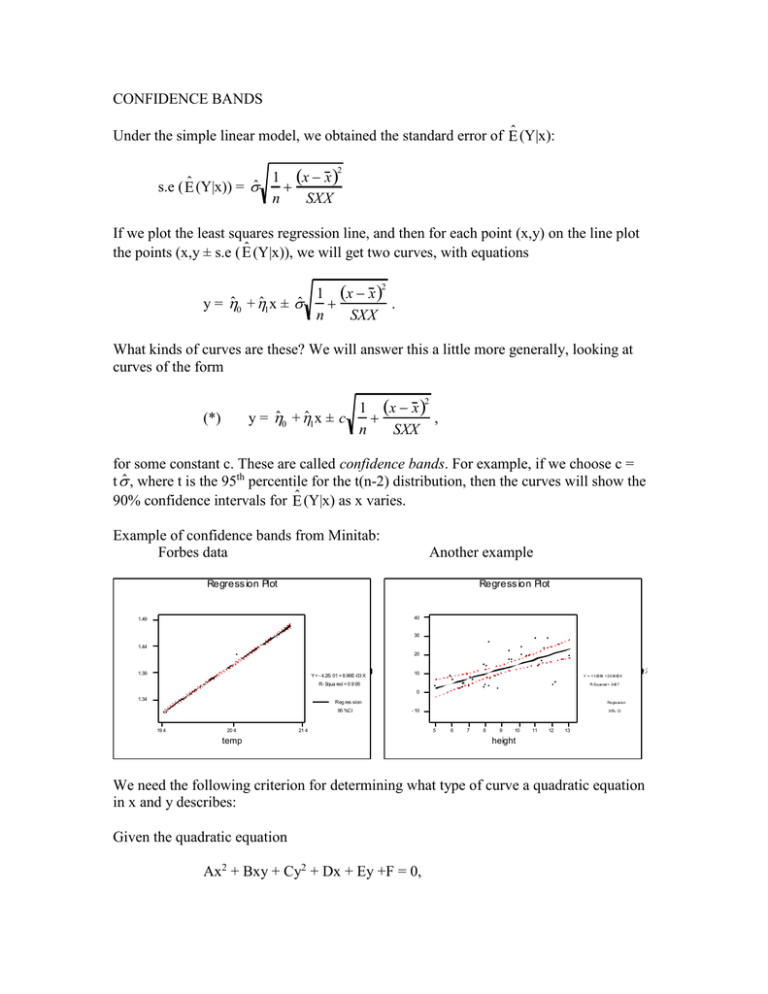
CONFIDENCE BANDS Under the simple linear model, we obtained the standard error of Eˆ (Y|x): 1 x x ˆ s.e ( Eˆ (Y|x)) = n SXX 2 If we plot the least squares regression line, and then for each point (x,y) on the line plot the points (x,y ± s.e ( Eˆ (Y|x)), we will get two curves, with equations 1 x x ˆ ˆ 0 + ˆ1x ± y = . n SXX 2 What kinds of curves are these? We will answer this a little more generally, looking at curves of the form 1 x x ˆ 0 + ˆ1 x ± c y = , n SXX 2 (*) for some constant c. These are called confidence bands. For example, if we choose c = ˆ , where t is the 95th percentile for the t(n-2) distribution, then the curves will show the t 90% confidence intervals for Eˆ (Y|x) as x varies. Example of confidence bands from Minitab: Forbes data Another example Regress ion Plot Regression ion Plot Plot Regress 40 1.49 20 30 1.44 20 1.39 Y = - 4.2E- 01 + 8.96E-03 X 10 10 YY== 0.15 -1 1.08 6 9483 9 + 2.6+34182.2X2769 X R- Squa red = 0 .9 95 R- Squa R-Sq ua red = red 0.42 =70 .9 74 0 1.34 Reg res sion 95 %CI 19 4 20 4 Reg Re greres ss io sion n - 10 0 21 4 temp 95 9 5%% CI CI 05 6 7 5 8 9 1010 11 12 13 15 height true We need the following criterion for determining what type of curve a quadratic equation in x and y describes: Given the quadratic equation Ax2 + Bxy + Cy2 + Dx + Ey +F = 0, 1 1 22 if the discriminant B2 - 4AC is positive, then the graph of the equation is a hyporbola (or a pair of intersecting lines in the degenerate case). (For more information, see the Mathworld website at http://mathworld.wolfram.com/QuadraticCurveDiscriminant.html) A little algebraic manipulation puts our equation (*) in the form 2 1 x x ˆ 0 - ˆ1x) = c (y - . SXX n More algebra gives 2 2 ˆ1xy + ˆ12x2 y2 - 2 ˆ1 2 So A = c2 2 x + (terms of degree 1 and 2) = 0. SXX c2 ˆ1, and C = 1, giving , B = - 2 SXX ˆ12- 4[ ˆ1 2 B2 - 4AC = 4 c2 c2 ]= > 0, SXX SXX so the confidence bands are a hyperbola. [Note: The least squares regression line is not one of the axes of the hyperbola, since the confidence bands are "equidistant " from the line vertically, but not in the perpendicular direction.]
